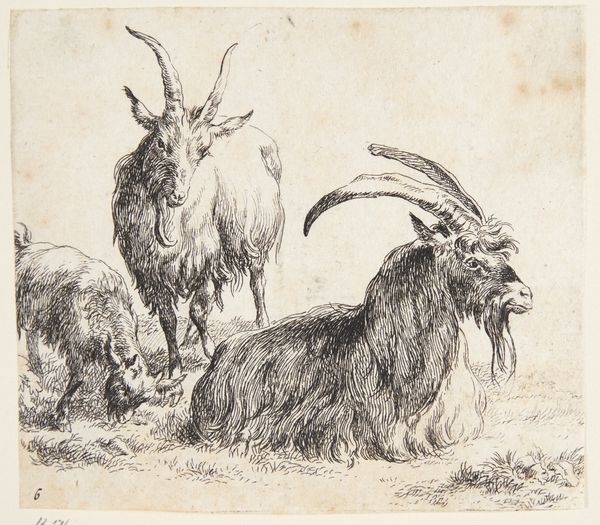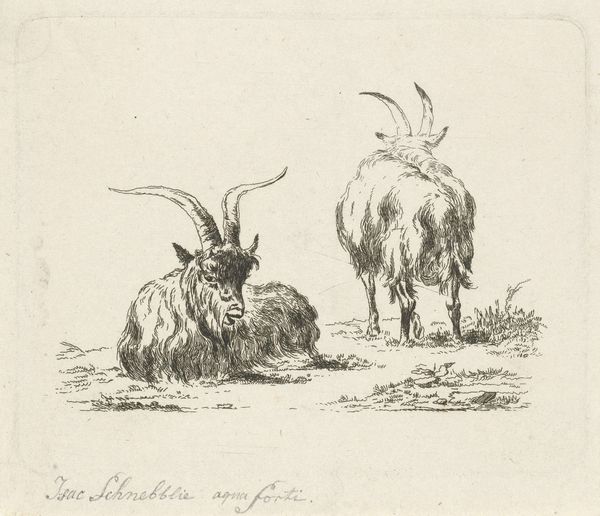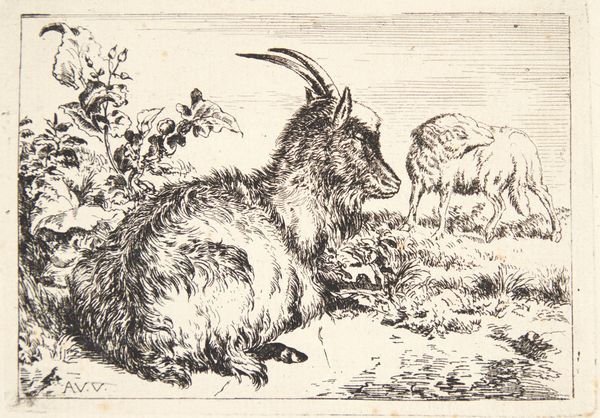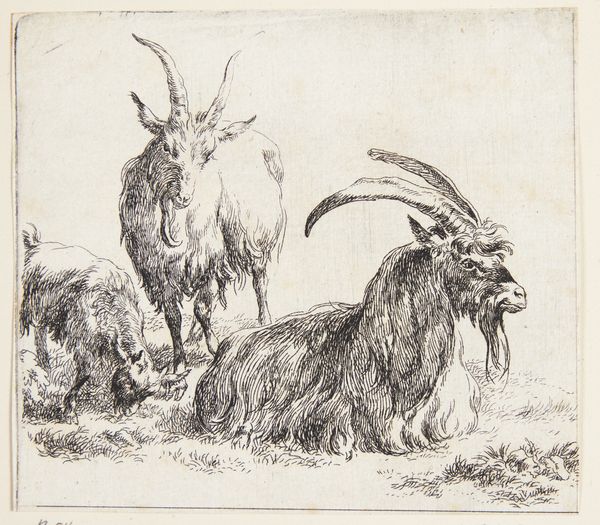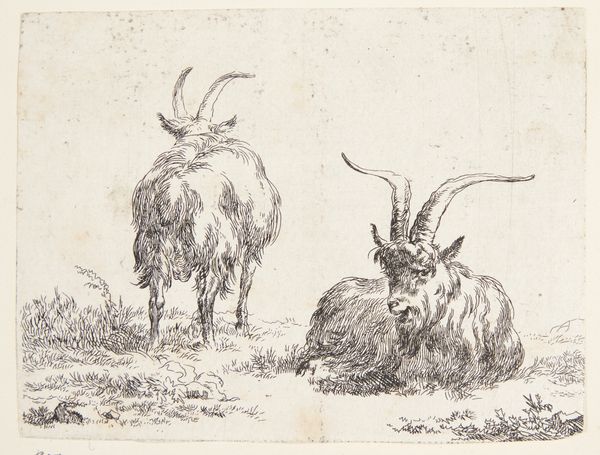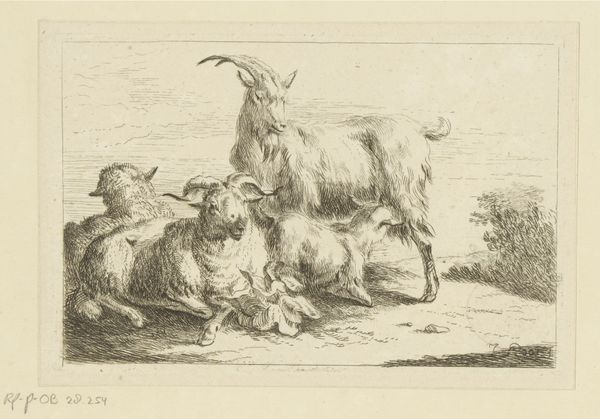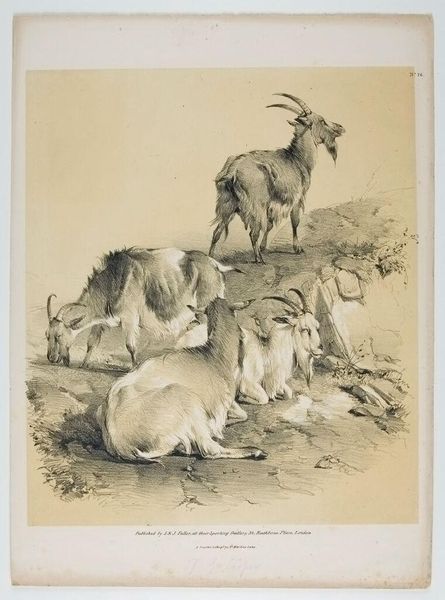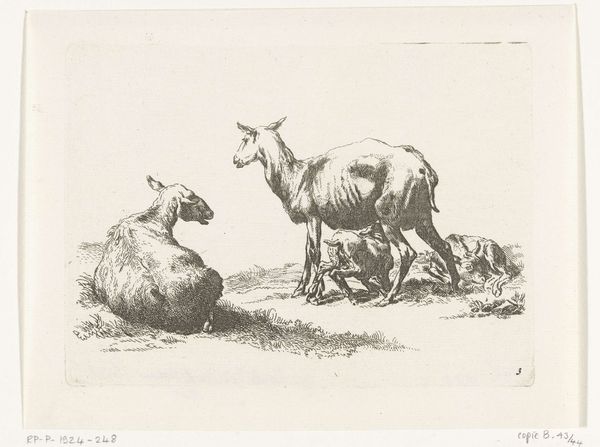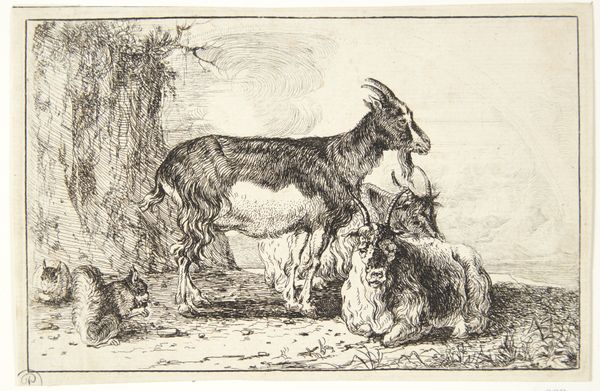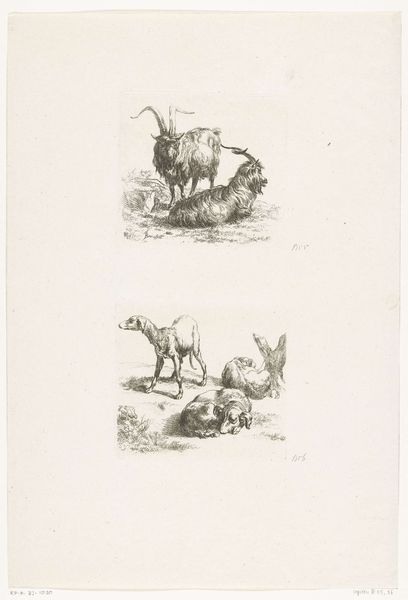
etching
#
animal
#
dutch-golden-age
#
etching
#
landscape
#
etching
#
realism
Dimensions: height 120 mm, width 164 mm
Copyright: Rijks Museum: Open Domain
Curator: Here we have an etching attributed to an anonymous Dutch Golden Age artist, sometime between 1666 and 1726, titled “Drie Geiten,” or "Three Goats." Editor: My first impression is a strange sort of serenity. Despite the rough lines of the etching, the positioning of the goats gives a very calm, almost pastoral feel. Curator: Note how the artist uses varied line weights and cross-hatching to define form and texture. The light source appears to be from above and slightly to the left, creating subtle shadows that accentuate the animals' musculature. It really creates depth in an otherwise limited palette. Editor: And that's interesting, because the goat as a symbol is rich. They're often associated with stubbornness, virility, and even the demonic – figures like Pan or the Devil often have goat-like attributes. Do you think that contrast plays into the effect of this piece? The juxtaposition of animalistic symbolism with the domestic scene creates a narrative tension that’s intriguing. Curator: I think that could be part of the interpretive framework, but to understand what kind of emotional affect they are intending it is vital to examine the composition’s geometric structure, such as, their relative sizes and positions which suggests that there's a dynamic interrelationship that needs to be further investigated. It also might have been produced purely for studies in nature rather than carry out a greater symbolism. Editor: Well, the recurrence of goat imagery in European art and folklore makes it difficult to completely ignore any cultural meaning. Looking at those majestic horns in the lead goat—surely those evoke some subconscious associations of power, the old gods, that kind of thing? Curator: Perhaps. Ultimately, though, the artist's choices regarding form—the textures and patterns and overall presentation of it on this paper is key, whether or not the original motivation came from symbolic reasons. It's a tight interplay between intention, meaning, and raw presentation. Editor: Absolutely. Whether perceived or intentional, the resonance of these images endures across centuries. I find myself strangely comforted by this image despite any darkness in its deeper symbolism. Curator: Indeed. A reminder that art’s meaning is often a collaboration between creator and viewer across the chasm of time.
Comments
No comments
Be the first to comment and join the conversation on the ultimate creative platform.
